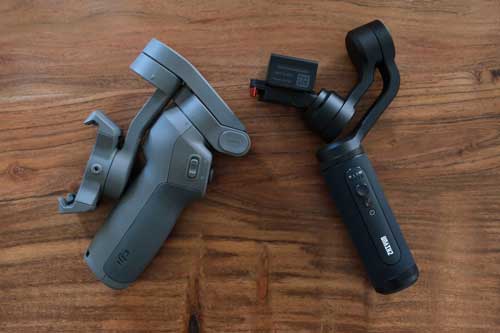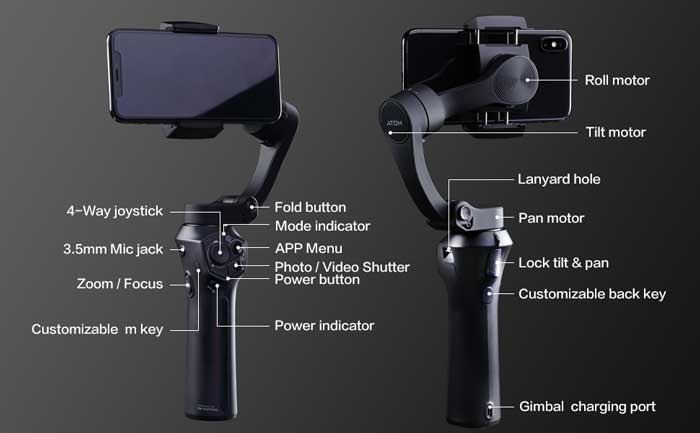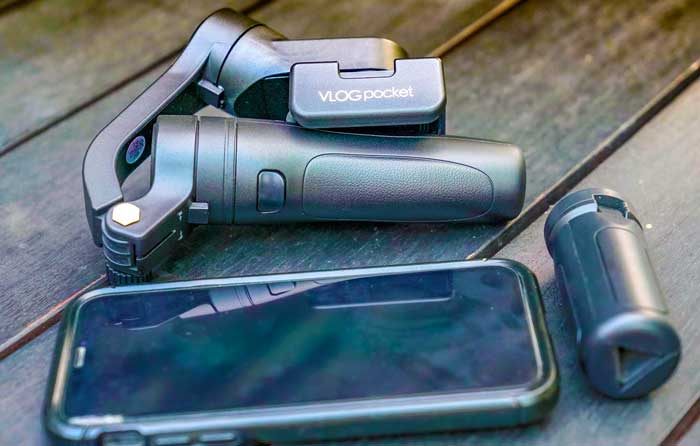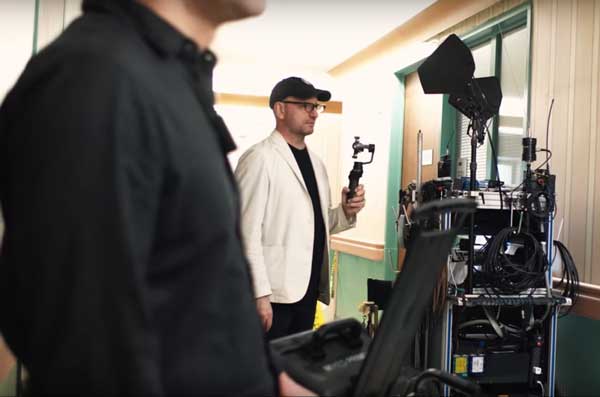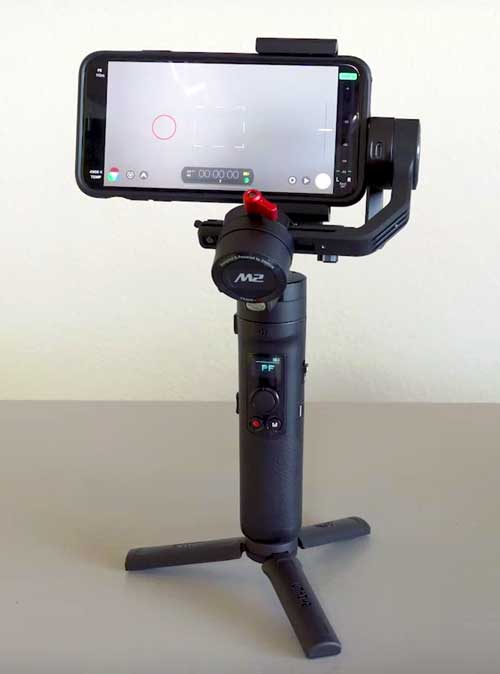10 Best Smartphone Gimbals for 2020
For shooting ultra smooth cinematic video, motorised 3 axis gimbals for smartphones, DSLRs and mirrorless cameras have been popular for the last few years. In that time, inbuilt OIS or EIS has made a gimbal less of a necessity but a 3 axis gimbal is still a useful accessory.
Before you look at gimbals, you might want to first have a read of our Gimbal Buyer’s Guide which gives you an overview of what to look for. This guide is full of important stats, ranking popular gimbals by weight, max payload, battery life and so on.
Difference between Inbuilt Stabilisation (OIS or EIS) and a Gimbal
If inbuilt stabilisation does a great job of removing handshakes from your video, why bother with a gimbal? Actually, there’s a number of reasons. So here’s why you might still need one:
- OIS and/or EIS systems don’t always work at higher resolutions like 4K. If they do, they are much less effective.
- inbuilt stabilisation is really designed more for taking handshake out of your still photos. Therefore, it often struggles with more exaggerated movements.
- Gimbals often come with apps and features which do a lot more than just smooth out your video
- When using a wide or anamorphic conversion lens, OIS and/or EIS can create shadowing
- Gimbals are specifically designed for capturing gliding, steady video shots. OIS and/or EIS is really just to remove or reduce handshake.
Lightweight or Heavy Duty
While there used to be only one all-purpose style of 3 axis gimbal, these days there are range of different types for different needs. We can split them into 3 categories:
- Light: small, portable, easy to pack, for vlogging, on the go, travelling etc.
- Medium: general purpose use, more sturdy and able to handle greater payload.
- Heavy: bigger, heavier, able to carry a variety of cameras from smartphone to DSLR.
Below, we will look at the best gimbals in each category.
Light
In the light category there are 2 main rivals. In the blue corner we have the Zhiyun Smooth Q2 and in the red corner the DJI Osmo Mobile 3. Meanwhile, the Snoppa Atom and Vlog Pocket are great light gimbals to look at, too.
These lightweight gimbals are often foldable, allowing them to pack away in the corner of your travel bag.
1. Zhiyun Smooth Q2
The Zhiyun Smooth Q2 is a follow up to the original Smooth Q. Sort of. In between, the highly popular Zhiyun Smooth 4 came along, which could be seen as a truer update to the Smooth Q. As the Smooth Q2 is Zhiyun’s first lightweight, folding gimbal so we can see it really fills a gap in the range, than advancing it.
For the Smooth Q2, Zhiyun have improved the strength and durability of the gimbal motors. This means the Q2 has a max payload of 260 grams, which is more than both the Smooth Q (200 grams) and the Smooth 4 (210 grams). The build is solid, being made from aerospace grade aluminum alloy.
The Smooth Q2 app also adds a range of features and control options.
Find the Zhiyun Smooth Q2 on Amazon2. DJI Osmo Mobile 3
The DJI Osmo Mobile 3 follows on from the Mobile 2 (and the Osmo Mobile 1 before). Like Zhiyun, DJI decided to create a portable, foldable gimbal with their latest release. The Osmo Mobile 3 is a little cheaper than the Smooth Q2 and is a few grams lighter. The battery life is also comparable with both devices lasting about 15 hours on full charge.
The build is less impressive than the Smooth Q2, however, with a more plastic construction. However, the gimbal weighs less as a result, so this might in fact be a plus point.
One major advantage for the DJI Osmo Mobile 3 is the design which keeps the gimbal out of shot. What, gimbal in the shot? Wouldn’t this be a major design flaw of any gimbal? Well, in normal circumstances the gimbal is out of frame. But when adding wide lenses (or using your inbuilt wide or super wide lens), a gimbal with a 3rd motor placed to the front of the camera causes problems. The Osmo Mobile 3 does not have this issue, as the 3rd motor is placed against the back of the smartphone.
On the down side, this motor design causes problems when trying to get a low angle with the gimbal. So, all in all, there’s a few pros and cons to weigh up between the 2 major rivals.
NEW: DJI Osmo Mobile 4 – DJI have just released the new version of the OM 3 – the OM 4!
Find DJI Osmo Mobile 3 on AmazonRead our full article: Smooth Q2 vs Osmo Mobile 3
3. Snoppa Atom
One of the first smartphone gimbals with a foldable design. Surprisingly, the Snoppa Atom has the highest max payload (310 grams), beating even middleweight gimbals. The Atom also has the longest lasting battery of any gimbal, with an astonishing 24 hour duration.
The original foldable gimbal also has a range of popular features and controls.
Find Snoppa Atom on Amazon4. FeiyuTech Vlog Pocket
Our final suggestion for a foldable, portable gimbal is the Vlog Pocket. This gimbal from FeiyuTech has one important attribute for a lightweight gimbal – it weighs only 272 grams, making it the lightest gimbal out there. It’s max payload of 240 grams isn’t too shabby, either.
FeiyuTech say there’s no need to balance your phone in the gimbal. Plus the sideways design of the 3rd motor should keep it out of frame when using a wide angle lens. So, if you truly prioritise weight and portability over all else, the Vlog Pocket could be for you.
Find Vlog Pocket on Amazon5. Value Choice: MOZA Mini-S
Our final suggestion for a portable, foldable smartphone gimbal is the MOZA Mini-S. It’s also one of the cheapest gimbals on the list. The Mini-S has a good max payload (260 grams) and a range of features. On the downside, the Mini-S is the heaviest of the portable gimbals listed here and has a battery life in the lower range (8 hours).
But do you need to use a smartphone gimbal for longer than 8 hours anyway?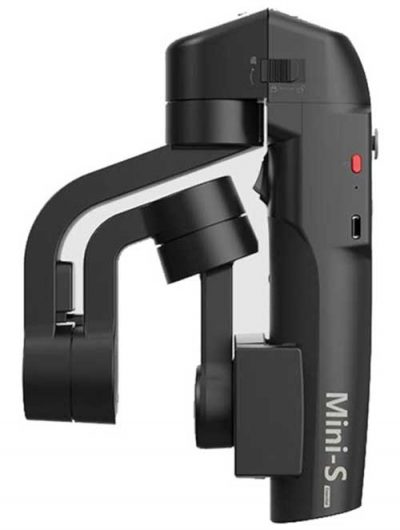
Medium
The following are the best general purpose smartphone gimbals. Unless you have a specific reason why your gimbal needs to be foldable or ultra lightweight, then we recommend one of following gimbals. Having said that, Zhiyun have improved their motors in the Smooth Q2, which means they outperform the bigger Smooth 4 gimbal.
Why choose a medium gimbal then? Some people simply prefer a weightier gimbal, with a longer handle. Also, gimbals like the Smooth 4 have a host of extra features and control options.
6. Zhiyun Smooth 4
Quite possibly the most popular smartphone gimbal produced so far, the Zhiyun Smooth 4 is a great all-round stabilization device. While the Smooth Q2 supersedes it in some respects, the Smooth 4 is well built and remains one of the few gimbals with FiLMiC Pro compatibility.
The Smooth 4 has a limited max payload of only 210 grams. But if you’re only mounting a smartphone and no attachments, that shouldn’t be a problem. The real selling point for the Smooth 4 remains it’s feature-packed control panel. Focus pulls and zoom controls using the side wheel being just one of many features attractive to smartphone filmmakers.
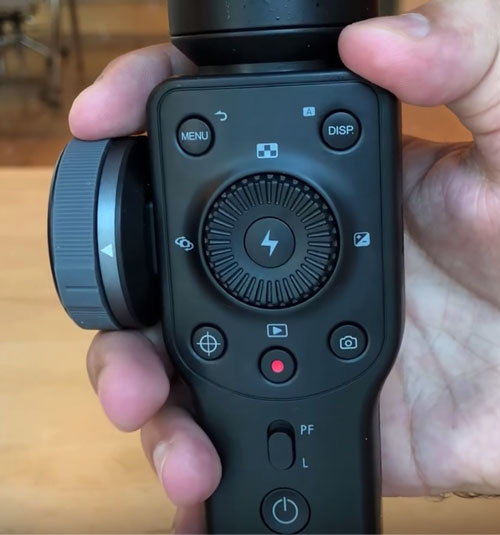
7. DJI Osmo Mobile 2
DJI were at the forefront of smartphone gimbal popularity with their Osmo Mobile 1 and 2. The Osmo Mobile 2 has even been used to shoot multi-million dollar feature films by an Oscar-winning director. So if you want to see what can be produced with one, just head to Netflix and search for High Flying Bird.
Although the DJI Osmo Mobile 2 is perhaps a little long in the tooth now, it’s one of the few gimbals compatible with FiLMiC Pro. It’s not the cheapest gimbal on the market but it remains a solid choice. The max payload is 240 grams, which is more than the new Osmo Mobile 3, while the gimbal itself is about 80 grams heavier. Note also, the Mobile 3 hasn’t improved on the Mobile 2’s 15 hour battery life.
8. Freefly Movi Cinema Robot
Aimed at professional filmmakers, the Cinema Robot’s ergonomic design is surprisingly comfortable. The gimbal is compatible with FiLMiC Pro and promises top-level video smoothness. Being able to set the gimbal down on a flat surface is another advantage.
On the downside is a price which remains well above the competition and a lack of popular features such as motion tracking. The app is slick, simple and easy to use. Many smartphone filmmakers still choose the Movi Cinema Robot over newer gimbals and are prepared to pay the extra dollars. One thing to note, with wider lenses the gimbal motor may find it’s way into frame (although this is a common problem with smartphone gimbals).
9. Value Choice: Hohem iSteady
While strong motors provide a max payload of 280 grams, the Hohem iSteady gimbal is lighter than any gimbal bar the Vlog Pocket. This makes it lighter than the Zhiyun or DJI portable gimbals. The battery life is good enough, although below more expensive rivals (12 hours).
The Hohem iSteady does most things you need a smartphone gimbal to do, for 20-25% less cost than most of the competition. Although mostly plastic, the construction feels solid and durable in the hand. While the gimbals lacks some of the features of other gimbals, often these are often more gimmicks than functions you’d use every day.
If you just want a gimbal that does the job and for less money, the Hohem iSteady could be for you.
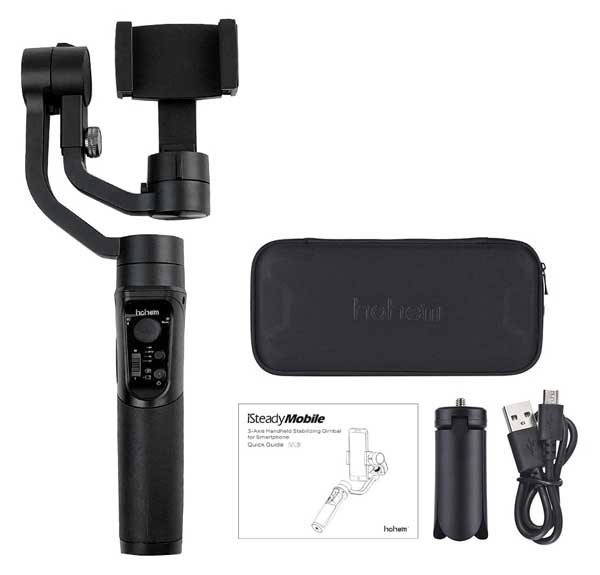
Heavy
While there are many 3 axis gimbals designed to be used with heavier DSLR and mirrorless cameras, they might be considered overkill for smartphone use. However, Zhiyun have recently brought out the gimbal which can be used with a smartphone as well as heavier cameras.
If you use both smartphone and other types of camera, a gimbal which covers all your devices might be desirable. Also, if you wanted to add extra accessories to your smartphone set up such as lenses, mics and lights then a gimbal with stronger motors might be a better bet than those listed previously.
10. ZHIYUN Crane M2
The Zhiyun Crane M2 (not to be confused with the bigger Zhiyun Crane 2) has a max payload of 700 grams, which is about double any other gimbal listed here. If you consider a heavy smartphone weighs about 200 grams, then that gives you plenty to play with.
At only 500 grams, it’s not actually the heaviest gimbal in our recommended list. But the battery life is a lot lower than the other Zhiyun smartphone gimbals here at only 7 hours. Essentially, this hybrid is pretty much in a class of it’s own, as comparable gimbals are either DSLR-mirrorless or smartphone only.
If you’re shooting with a DSLR/mirrorless camera and you need a lighter, more compact gimbal then this could be a great choice. Likewise, if you’re shooting with a smartphone but want extra power to carry add-on lenses, lights and so on. In fact, the Crane M2 has 1/4 -20″ has threaded holes built into the handle itself, so users can mount an external mic, lights or lightweight video monitor direct to the gimbal.
In addition, with the 3rd motor on the opposite side to most other gimbals, there’s no issues when using wide angle lenses.
Find Zhiyun Crane-M2 on AmazonRead more: The Official MoMo Smartphone Filmmaking KIT LIST.
Eager to learn more?
Join our weekly newsletter featuring inspiring stories, no-budget filmmaking tips and comprehensive equipment reviews to help you turn your film projects into reality!
Simon Horrocks
Simon Horrocks is a screenwriter & filmmaker. His debut feature THIRD CONTACT was shot on a consumer camcorder and premiered at the BFI IMAX in 2013. His shot-on-smartphones sci-fi series SILENT EYE featured on Amazon Prime. He now runs a popular Patreon page which offers online courses for beginners, customised tips and more: www.patreon.com/SilentEye


